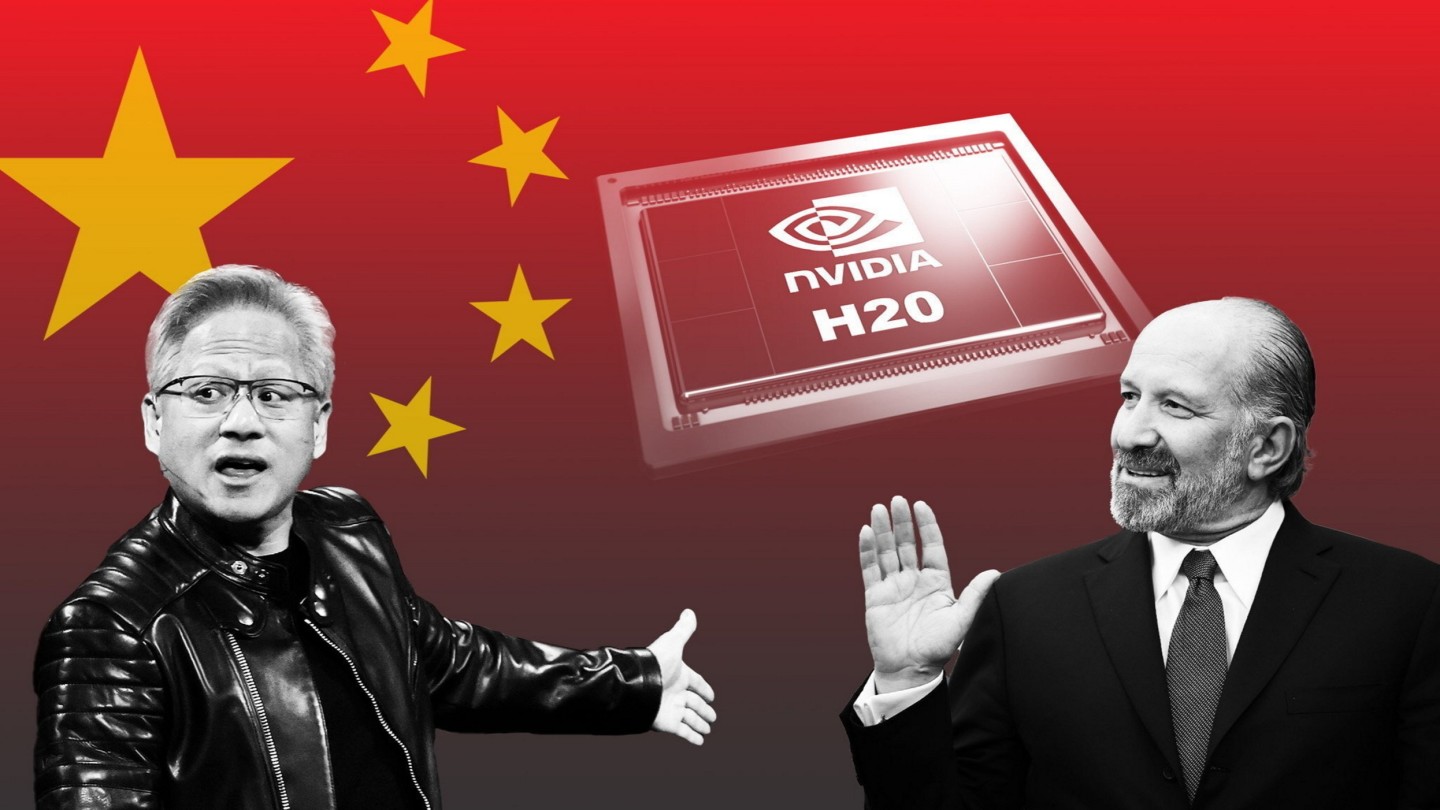In a significant development in the tech industry, China has moved to restrict the sale and use of Nvidia’s H20 AI chips within its borders. This decision follows remarks made by U.S Commerce Secretary Howard Lutnick, which Chinese officials have deemed insulting and detrimental to bilateral relations.
On July 15, 2025, Howard Lutnick appeared on CNBC and made a statement regarding U.S chip exports to China. He remarked, We don’t sell them our best stuff, not our second best stuff, not even our thirdnbest, referring to the quality of AI chips provided to China.
Lutnick further suggested that the U.S. strategy was to sell the Chinese enough that their developers get addicted to the American technology stack. These comments were made a day after the Trump administration lifted restrictions on the sale of certain AI chips to China.
Chinese officials quickly expressed their displeasure, considering the remarks as an affront to China’s technological aspirations and sovereignty. In response, Beijing initiated measures to curb the use of Nvidia’s H20 chips.
China’s Regulatory Response
Following Lutnick’s comments, several Chinese regulatory bodies, including the Cyberspace Administration of China CAC, the National Development and Reform Commission NDRC, and the Ministry of Industry and Information Technology MIIT, issued informal directives to domestic tech companies.
These directives advised firms such as Alibaba, ByteDance, and Tencent to halt or reduce their orders of Nvidia’s H20 chips, citing national security concerns and the desire to promote domestic alternatives.
The H20 chip, a downgraded version of Nvidia’s high end models, was initially developed to comply with U.S export restrictions. Despite this, Chinese regulators have raised concerns about potential security vulnerabilities and the strategic implications of relying on foreign technology.
China has long aimed to achieve technological self sufficiency, and the current situation has accelerated efforts in this direction. Domestic companies like Huawei, Cambricon Technologies, and MetaX are at the forefront of developing AI chips tailored to China’s needs.
For instance, Cambricon Technologies has seen a significant increase in demand for its products, with its stock price soaring by 383% in 2024. Similarly, MetaX has developed the C500 AI training GPU, which, while not yet matching Nvidia’s top tier models, offers a viable alternative for many applications.
These developments reflect China’s broader strategy to reduce dependence on foreign technology and bolster its domestic semiconductor industry.
DeepSeek’s Strategic Shift
DeepSeek, a prominent Chinese AI startup, exemplifies the shift towards domestic solutions. Previously reliant on Nvidia’s GPUs, DeepSeek has now transitioned to using Iluvatar CoreX’s TianGai 100 series for its AI training needs.
This move aligns with China’s broader strategy to reduce dependence on foreign technology and bolster its domestic semiconductor industry. Industry experts have weighed in on the unfolding situation.
Dr. Li Wei, a semiconductor analyst at Tsinghua University, notes, China’s push for domestic AI chips is not merely a response to geopolitical tensions but a strategic move to ensure long term technological sovereignty.
However, some experts caution that the transition may not be seamless. Dr. Zhang Ming, a former Nvidia engineer, comments, While domestic alternatives are emerging, they currently lag behind in performance and ecosystem maturity.
Tech professionals in China are experiencing firsthand the challenges and opportunities presented by this shift. Li Jun, a software engineer at a leading AI firm in Beijing, shares, Adopting domestic chips has been a learning curve.
The performance is comparable in many areas, but compatibility with existing software frameworks has been a hurdle. Despite these challenges, Li remains optimistic, stating, The move towards self reliance is essential for our industry’s growth.
The Geopolitical and Economic Dimensions
The U.S China tech rivalry is entering a new phase, with AI chips at its core. China’s response to Lutnick’s remarks underscores the intersection of technology and national pride.
Economically, the push for domestic AI chips presents both opportunities and risks. While fostering local innovation can stimulate economic growth, the initial costs and potential performance gaps may pose challenges.
As the situation evolves, several key factors will influence the trajectory of this technological standoff. Diplomatic Engagement Efforts to de-escalate tensions through diplomatic channels could pave the way for more collaborative technological exchanges.
Technological Advancements Continued investment in research and development by both U.S and Chinese companies will determine the future competitiveness of AI chips.
Market Dynamics Consumer and enterprise adoption of domestic versus foreign chips will play a crucial role in shaping the market landscape.
The unfolding saga between China and Nvidia serves as a poignant reminder of the intricate interplay between technology, geopolitics, and national identity.
As both nations navigate this complex terrain, the outcomes will have lasting implications not only for the AI industry but also for the broader global technological ecosystem.

